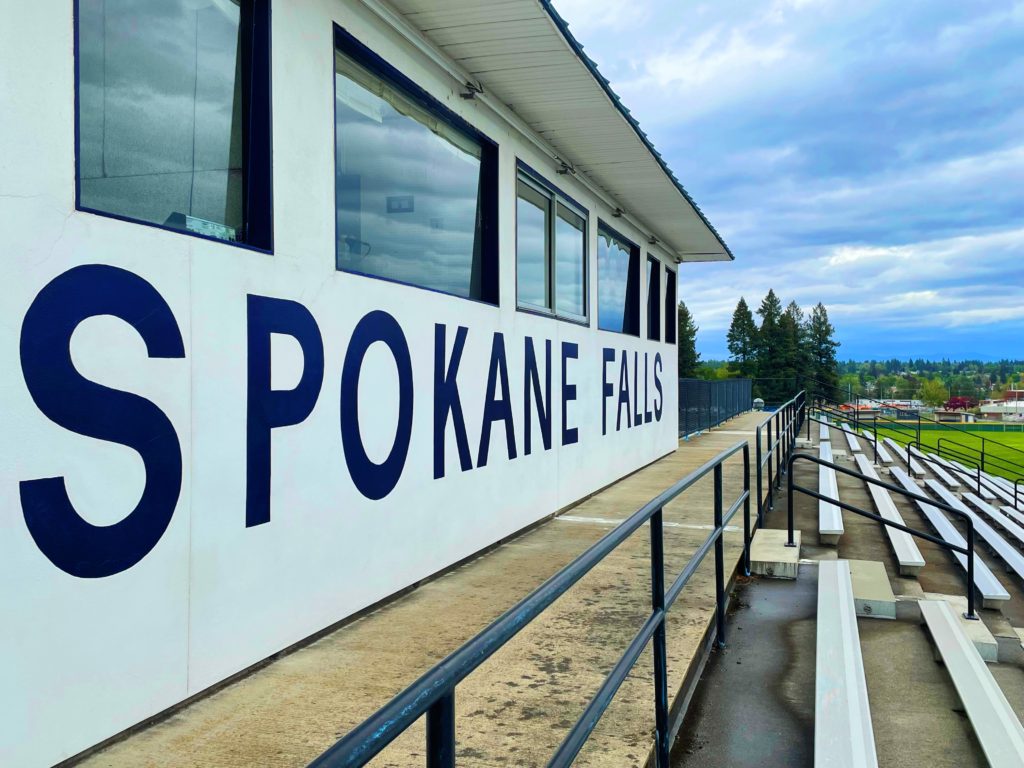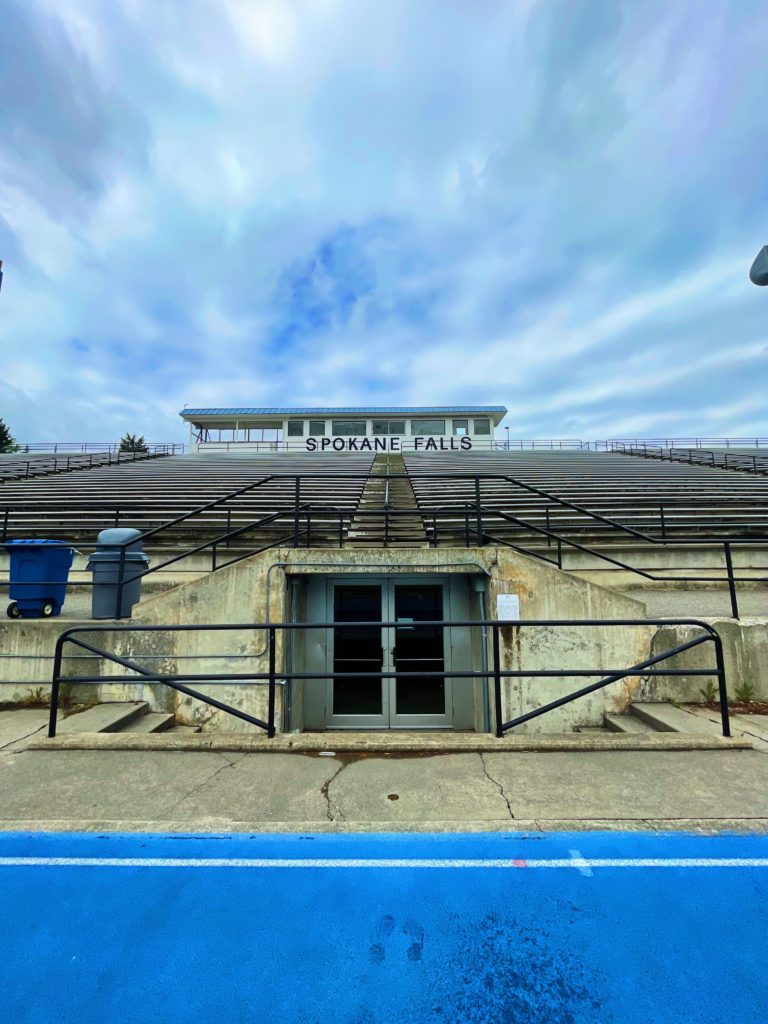
If you’ve ever rooted on your Bigfoot Soccer at a home game, or ventured to the edge of campus far enough to notice the stadium bleachers, congratulations! You’ve found Building 13. Often overlooked, Building 13 is seldom just a set of bleachers. The structure is home to a few classrooms, offices, and the Bigfoot Soccer locker rooms.
Built in 1969, the Sports Annex has stood tall on campus for fifty-three years – but not without complication. Although it underwent a remodel in 2012, the building has been closed off to students and faculty on the inside this Spring due to a leaking ceiling and excessive water damage.
Responding to this issue, Jason Foraker from Community Colleges of Spokane’s (CCS) Facilities/Maintenance and Operation (MNO) oversees all CCS capital projects – including this rather emergent one.

“The SFCC Leadership and Facilities took prudent measures to ensure safety of students and staff when water was reported to be coming down through the changing rooms last winter.” Foraker said, “it was assessed that these areas needed to be restricted due to impacted overhead lighting and drywall damage. There was also rainwater that was accumulating in the ceiling and floor tiles.”
With the incurred current damage, CCS sought out outside help to formulate a solution to this situation.
“CCS reached out to industry professionals to gain information on the reason for the water infiltration” Foraker said, “It was learned that the water stops, sitting atop the bleachers are being impacted from expansion and contraction, allowing rainwater to seep past during larger rainfalls. A structural study was also performed on the upper cast bleachers to gain insight on deteriorated concrete surfaces. It was found that the building structure is not compromised from this.”
While Building 13 has officially been deemed structurally sound, the invasive rainfall still remains an urgent issue.

“Our next step is we hired an architect,” Foraker said. “They are called ALSC, they are a local architecture company, and they did an assessment, advising CCS on how to proceed. We have a plan to seal the top of the stadium and that’s still in the works. What typically goes on with that is that a contract is put together, and then it’s put out to bid.”
Spring Quarter was timely for this structural surprise, as construction work is much more difficult in the Spring due to the PNW’s temperamental weather patterns.
“That’s still in the works and you really can’t start that work until we get to the summertime.” Foraker reminds, “so that’s kind of why the project’s on hold. You couldn’t go up there and start sealing and then this big May rain dumps on it. So down below [within the building], there’s containers to catch water to prevent any more damage.”
With limited access to the building and upper bleacher section, SFCC facilities have made it a priority to take action in mitigating rainfall to prevent further damage, and restore the Sports Stadium to a structure that can be enjoyed by students, athletes, faculty and the Bigfoot community, as it has been for fifty-three years. Until then,

“We have some pretty impressive buckets,” states Foraker.
Additionally impacted by the closure of Building 13, Professor and retired Spokane Falls Soccer Coach, Kenny Krestian’s office is located in the Sports Annex and his Stress Management class was set to be taught there as well. Luckily, the re-adjustment for Spring quarter wasn’t too extensive.
“Just this Stress Management class was moved.” said Krestian, “I’m currently the only full time faculty member with an office in the stadium, but there are two adjunct faculty offices as well.”
Stress Management was moved into the Student Athletic Center (SAC) last minute before Spring Quarter ‘22 started, with no estimate for the span of the closure.
“Roughly in early to mid-March, a week or two before Spring Quarter started they told me to grab anything I might need because they didn’t know when we would be able to get back in.” said Krestian, “but we got the all-clear at the beginning of May.”

Regardless of a location switch-up, Krestian explained there wasn’t much difference between the two settings, the Sports Annex classrooms even had SmartBoards, as opposed to the SAC classrooms equipped with the classic whiteboards.
“There’s not much of a difference in terms of the classroom,” Krestian stated, “however, the computer that is in my office in Building 13 is much better than the one in my temporary office in Building 7.”
Also learning to readjust this quarter, the Bigfoot Soccer teams were forced to sacrifice their locker rooms at the risk of the leaky structure.
Miguel Covarrubias, a first-year at SFCC and member of Men’s Soccer since Fall 2021, delves into both the positive and negative aspects the closure of Building 13 has had on his team.
“Our temporary locker room was moved to the bathrooms behind the stadium.” Covarrubias said, “the one benefit to this was probably that it was still in the stadium, so we didn’t have to move far. The main struggle with that was that it was a bathroom so all of us just had to sit on the floor.”
Without a doubt, this was seemingly a stressful adaptation, but Bigfoot Soccer was able to wrap up their season with a return to their original home base.

“We were able to return to the locker rooms for our last game of the spring season.” Covarrubias said, “not having the locker room affected us because being in the bathroom felt kind of like a joke and made it hard for us to take the game seriously. I would say being in the actual locker room helps us focus and get mentally prepared for games better.”
Overall, the temporary closure of the Sports Annex affects a multitude of individuals within the Bigfoot community. Fortunately, the damages are not detrimental to the building’s structural quality, and come Summer, the building will soon begin to return to its original quality moving forwards for access to students, faculty and athletes as it has been for over fifty years.